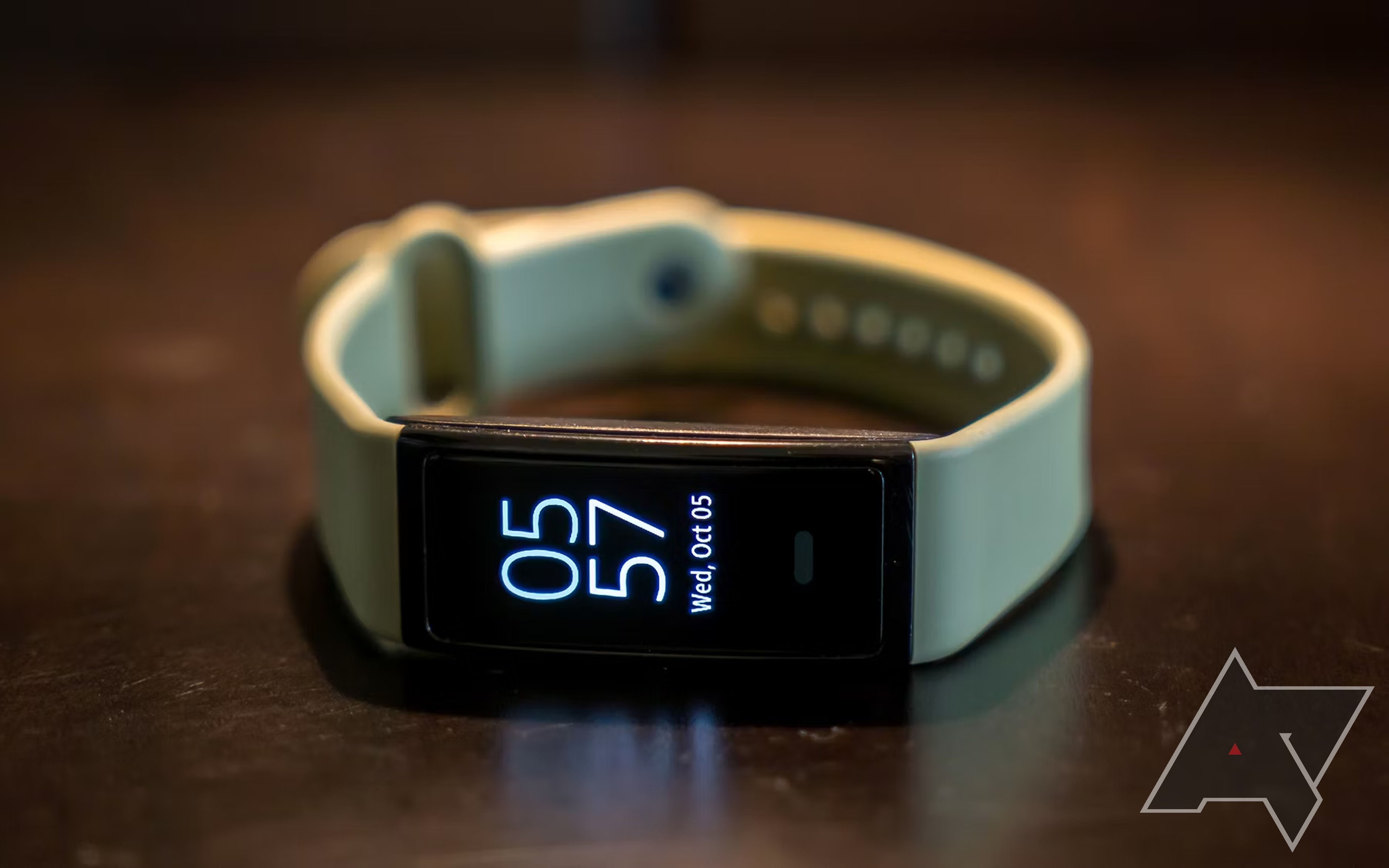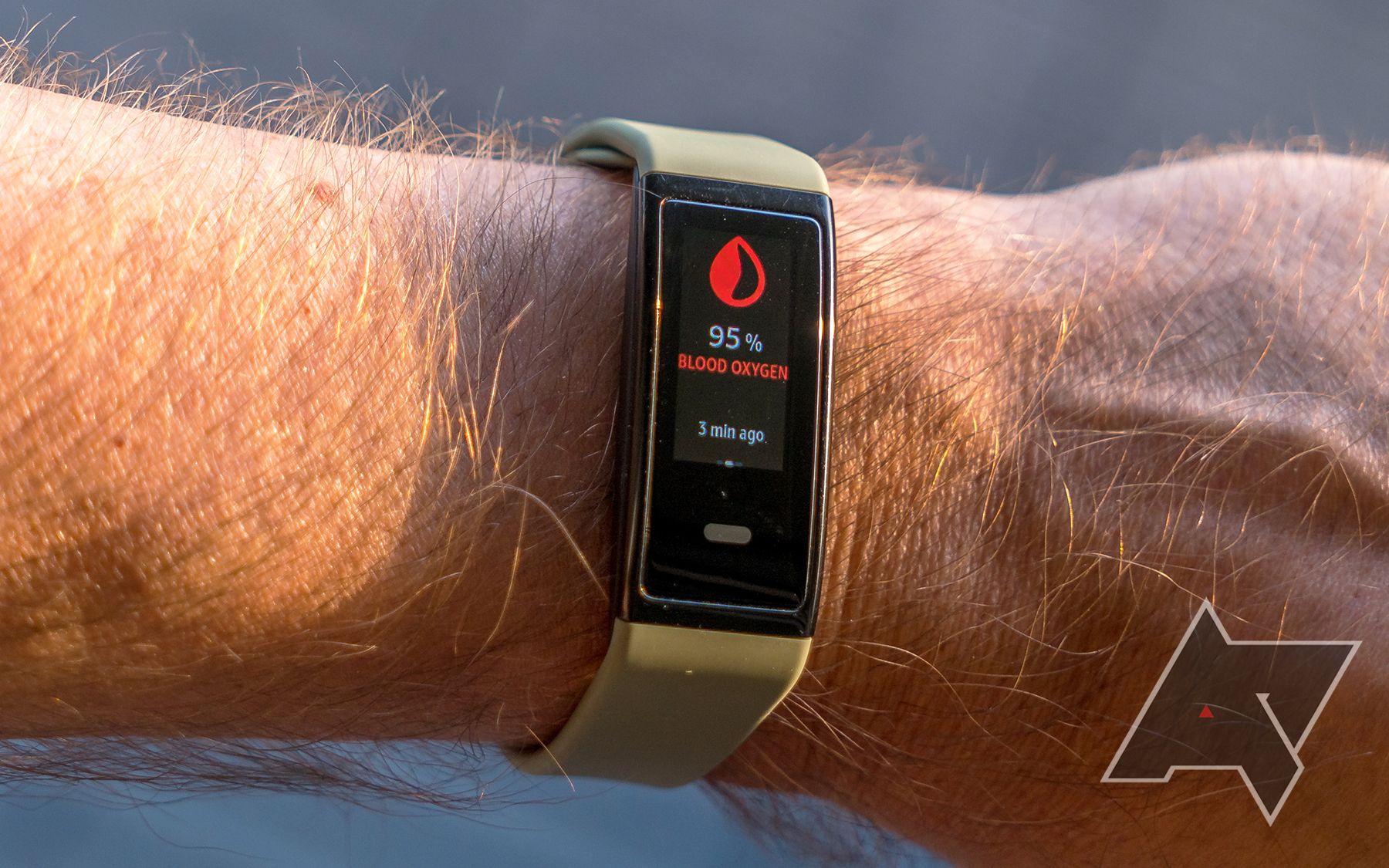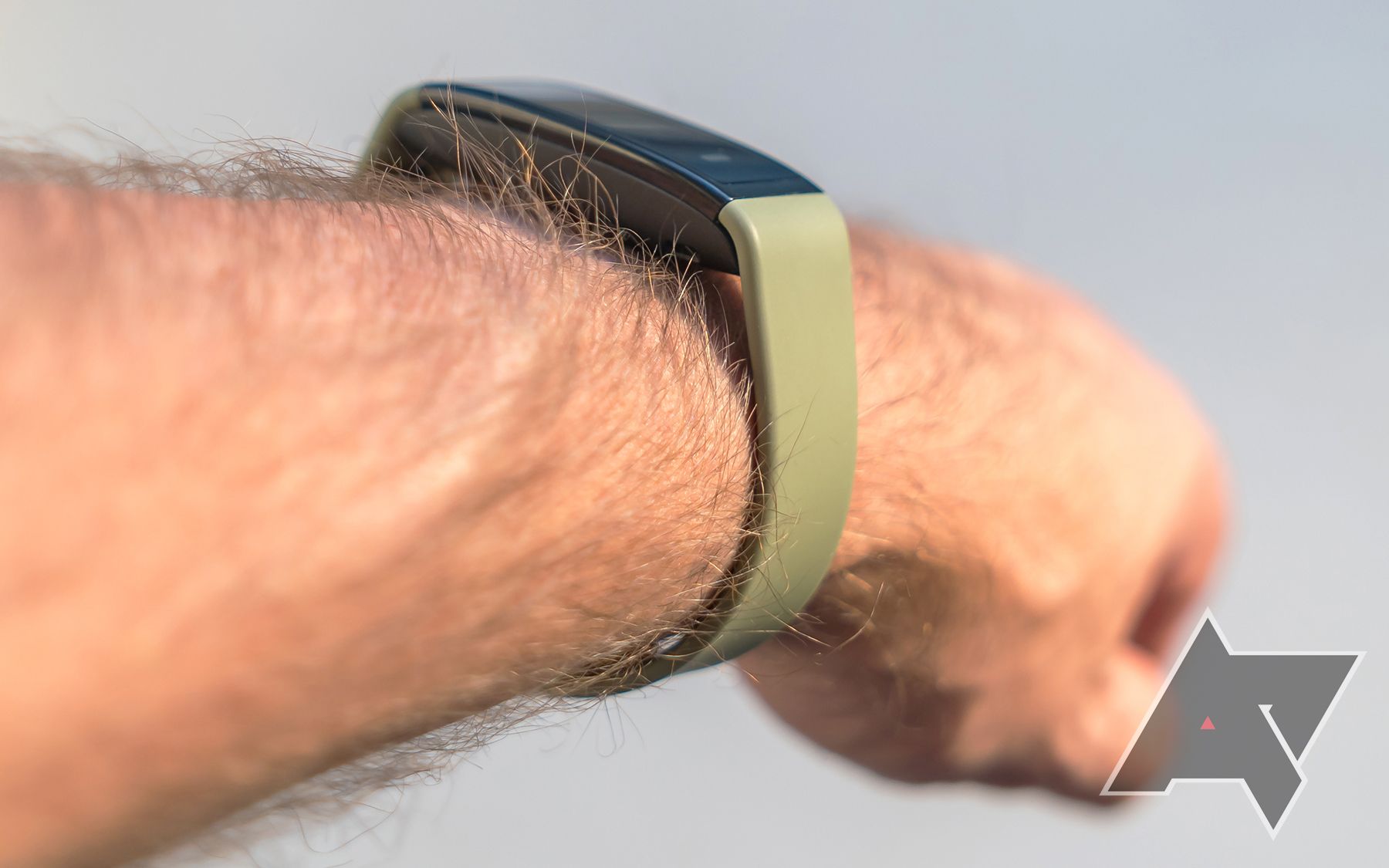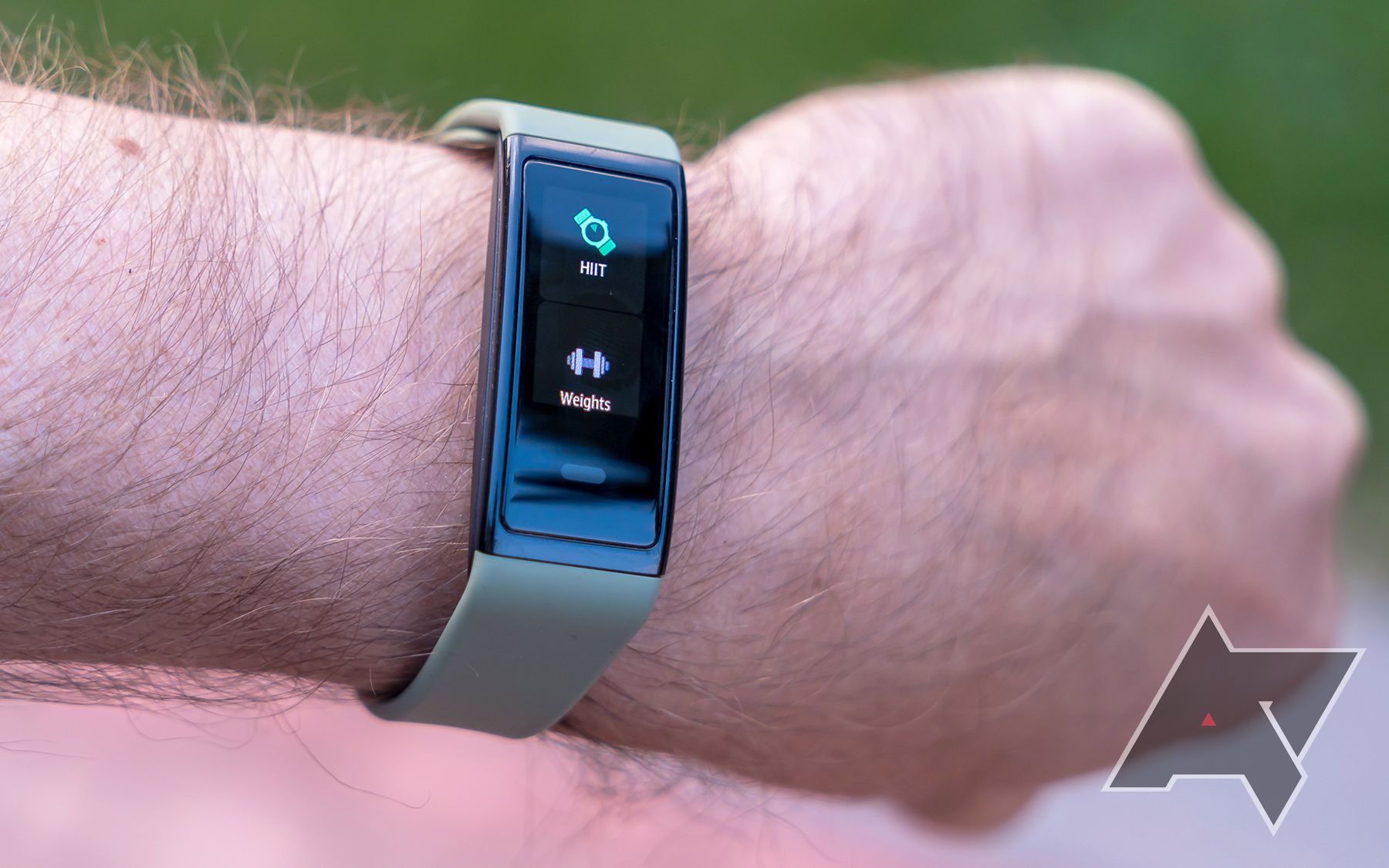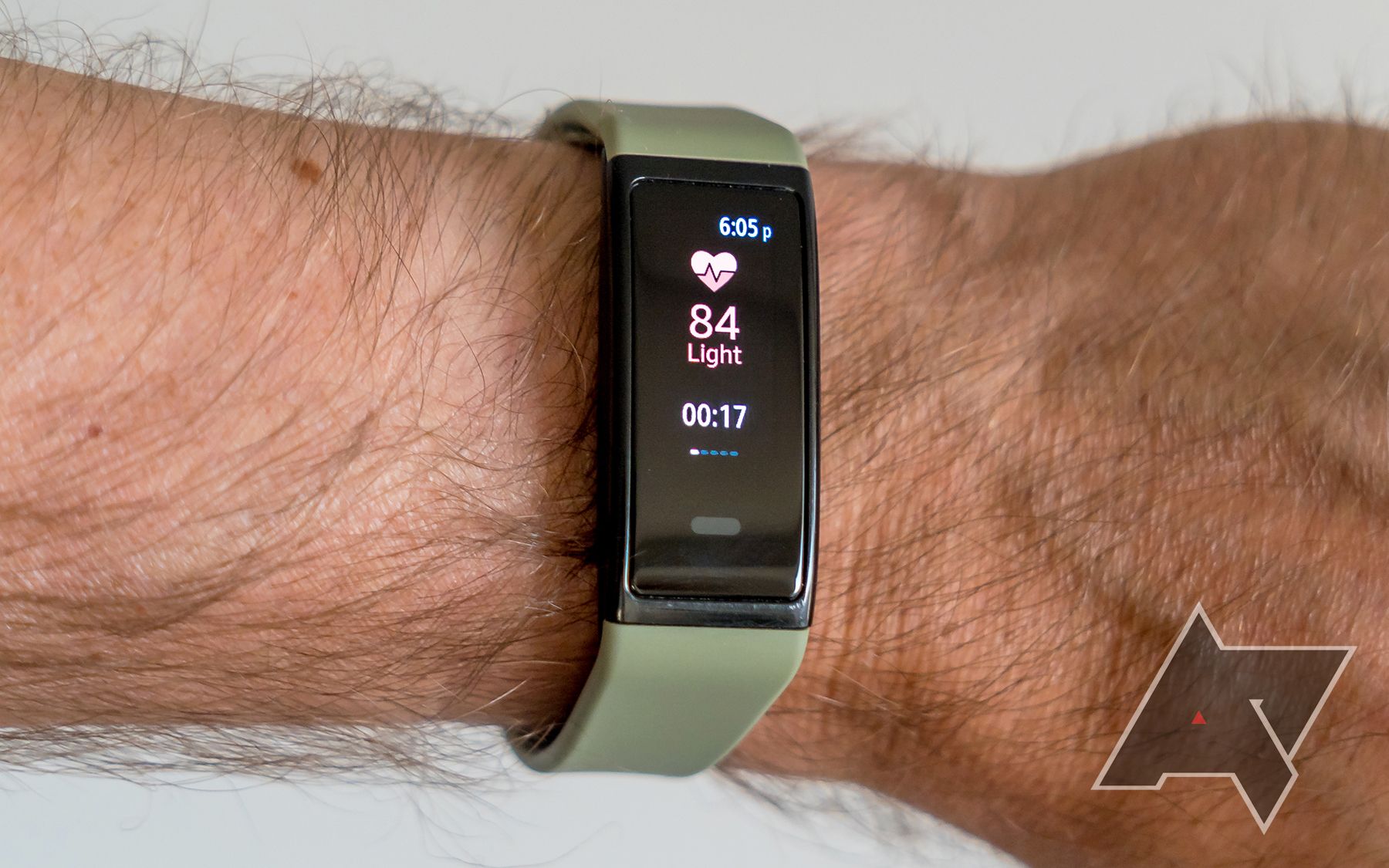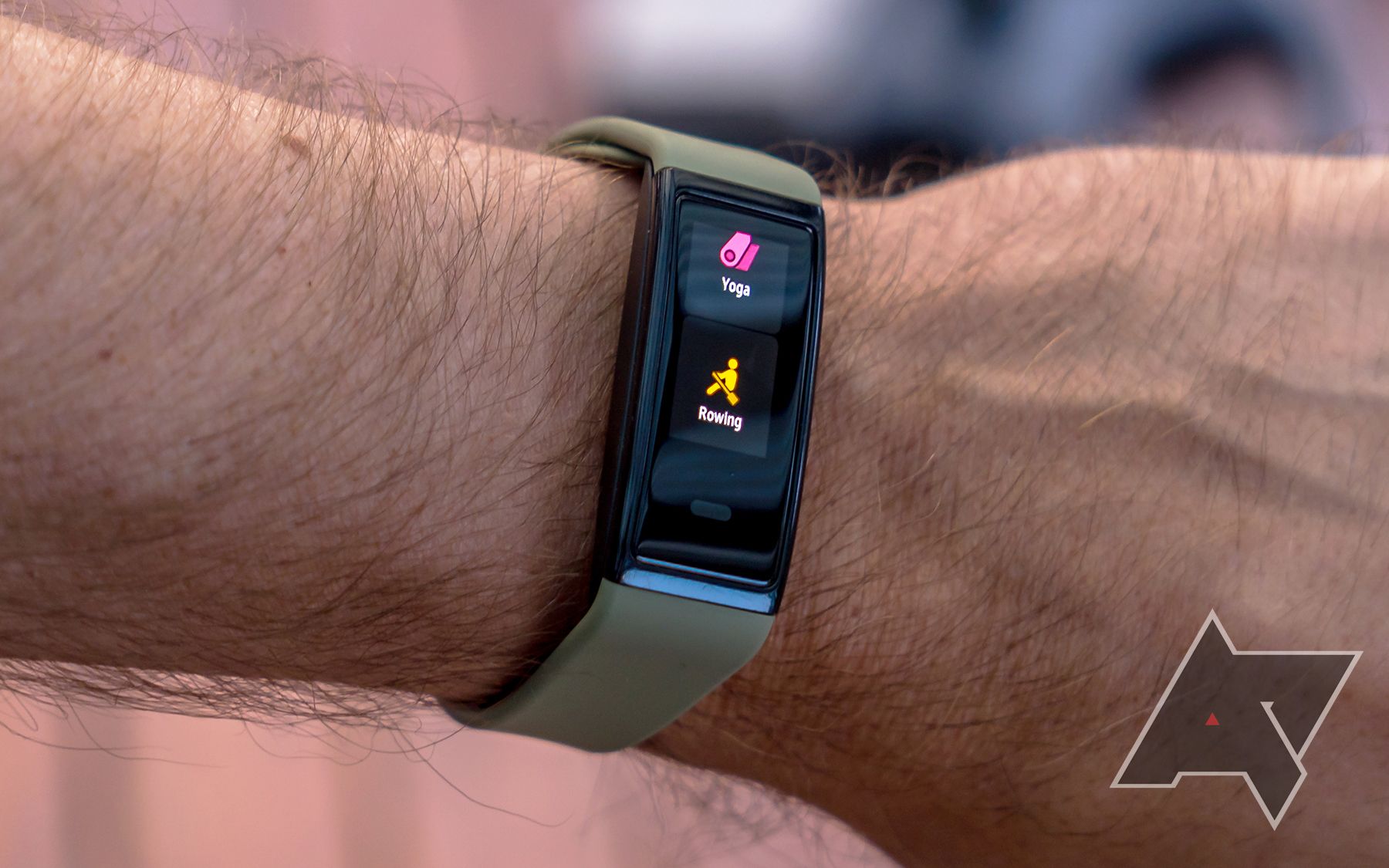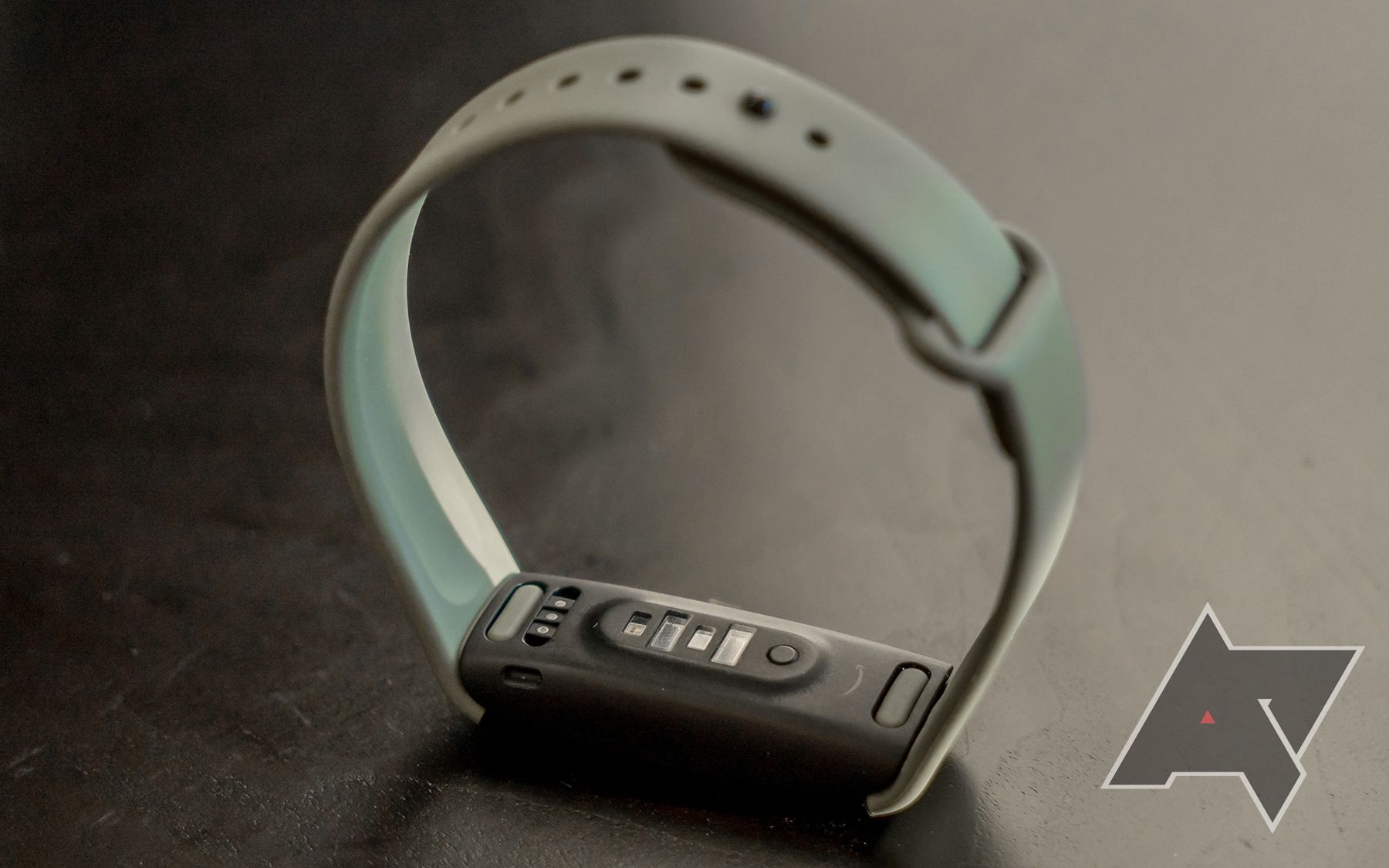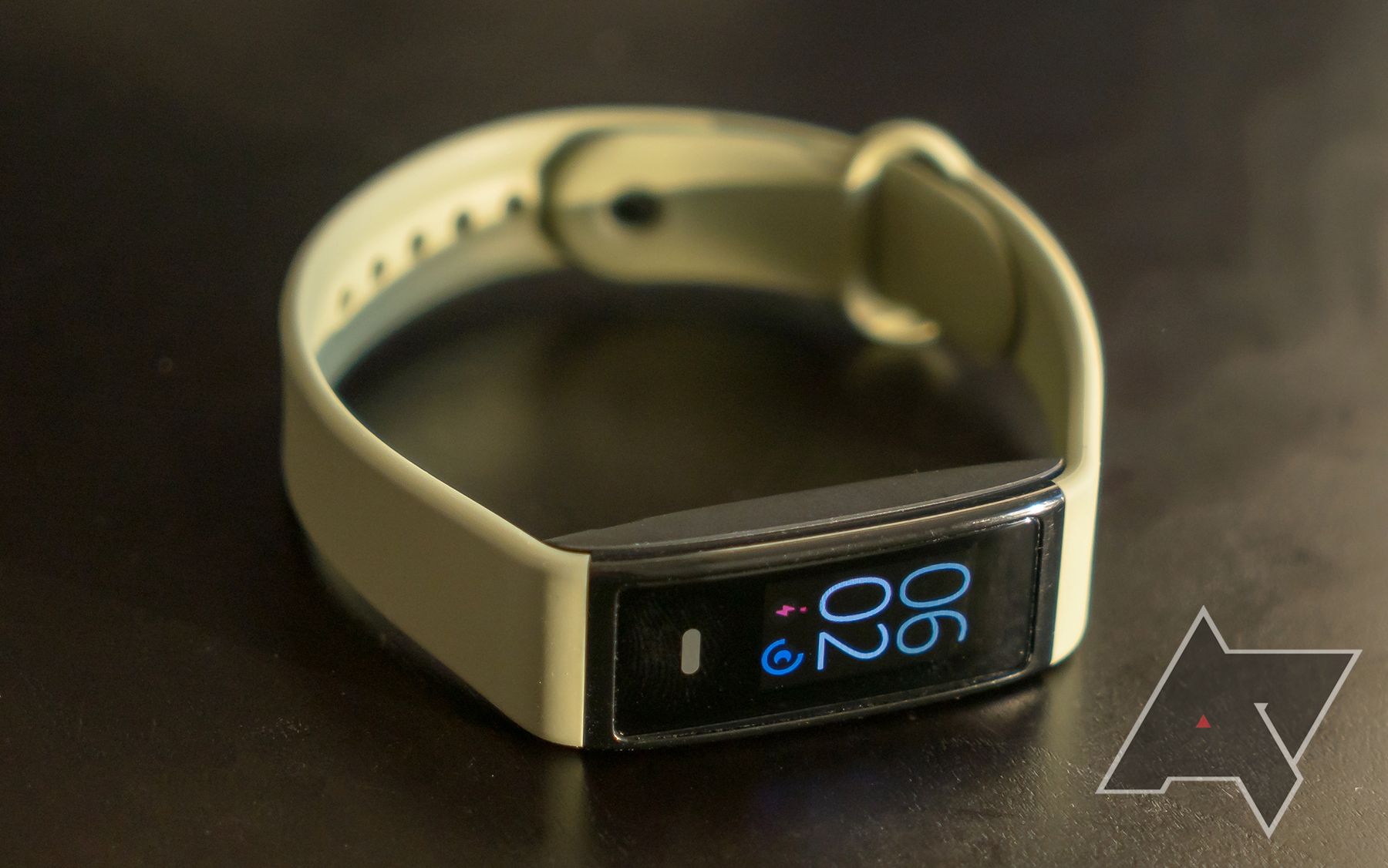As of April 2023, Amazon’s Halo fitness trackers are no longer on sale and the company plans to stop support for the wearables in August. The following review is left in its original form, but we no longer recommend purchasing Amazon Halo products.
If you’ve bought a Halo fitness tracker after April 2022, you may be eligible for a refund. You can find out more details about Amazon’s refund policy and the whole shutdown of Halo here.
With the Halo View, it seems Amazon literally wanted to show you what its fitness tracking can do. Considering the company's previous tracker, the Halo Band — a device without a screen like the Fitbit-style View — it's likely that the goal here was a more traditional tracker with a more affordable price.
The screen is the window, but Amazon's Halo app contains the goods, serving up features to keep you on track for whatever goals you've set. Given its budget-conscious focus, the Halo View offers more bang for your buck compared to some of the best fitness trackers and best smartwatches, though the app brings in features and options not always seen from competitors.
But in sticking to a lower price, Amazon also had to cut several corners, which shows when wearing this tracker over time. Plus, you have to pay extra after the first year to get everything the app can give you.
The Fitbit comparisons are immediately obvious, given the similar design and form factor. Still, Functionality and Halo app access offer content and insights that aren't always available elsewhere. That combination — plus the cheaper price — makes the Halo View an intriguing choice in the hunt for a solid, affordable wearable.
Amazon Halo View
- Heart Rate Monitor: Yes
- Color Screen: Yes
- Notification Support: Yes
- Battery Life: Up to 7 days
- Integrations: Android, Halo membership
- Health sensors: Heart rate, SpO2
- IP rating: Up to 50 meters
- Small bands: Yes
- Large bands: Yes
- Colors: Active Black, Lavender Dream, and Sage Green
- Price: $80
- Mobile payments: No
- Workout detection: No
- Exercise modes: 100+
- Lightweight and comfortable to wear
- Rugged and durable, with solid waterproofing
- Screen is bright and colorful
- One year of Halo mambership included
- Affordable price
- No GPS functionality at all
- Limited tracking metrics, especially if membership runs out
- Not much you can do with notifications from your phone
- Bands are a little tricky to swap out
- Privacy always casts a shadow with Amazon
Amazon Halo View: Design and fit
Being a lightweight fitness tracker, the Halo View feels like many others out on the market. Its design doesn't radically change anything compared to most fitness trackers; you get a familiar module with a screen connected to silicone straps. It resembles the Fitbit Inspire 2 and appears similar to the newer Inspire 3, though Amazon's wearable is different enough to have its own identity.
The strap was comfortable and not itchy for me, easy to wash, and fairly simple to put on or take off. It comes in either a small/medium or medium/large with black, green, and lavender color options. Amazon sells the Sport Band in multiple colors, as well as fabric, leather, and metal bands. On top of that, other brands also make their own bands compatible with the Halo View.
I only ran into a situation once where the device separated from one of the straps; I still don't know how it happened since I never bumped into anything or fiddled with it. That was about two weeks into testing it, and it never happened again over the two months I kept wearing it after that. I've seen complaints about stability, though I can't be sure how common the issue is.
Amazon Halo View: Interface and Halo app
Halo View makes consistent contact with the wrist, helping the sensors inside get to work. There are no physical buttons aside from the touch one acting as both a back and home button, while you can also swipe through the screen to navigate the interface. Swipe left or right from the watch face to see sleep, calories, steps, heart rate, and points (more on that later). Swiping up or down cycles through the main apps, like data, exercise, tools, music playback, settings, and messages.
Each of those apps then takes you through its own sub-menus to access certain features or data points you want to engage with, like blood oxygen readings via the SpO2 sensor, real-time heart rate monitoring, and exercise tracking.
Amazon kept things pretty simple on the screen itself because the Halo View's job is to track what you're doing with minimal fuss. You can set it all up via the Amazon Halo app, starting with pairing and connecting to your phone. Amazon includes a 12-month free-access Halo membership that keeps all the app's content unlocked. I can't understate the importance of that membership because, without it, the Halo View is little more than a basic activity and sleep tracker.
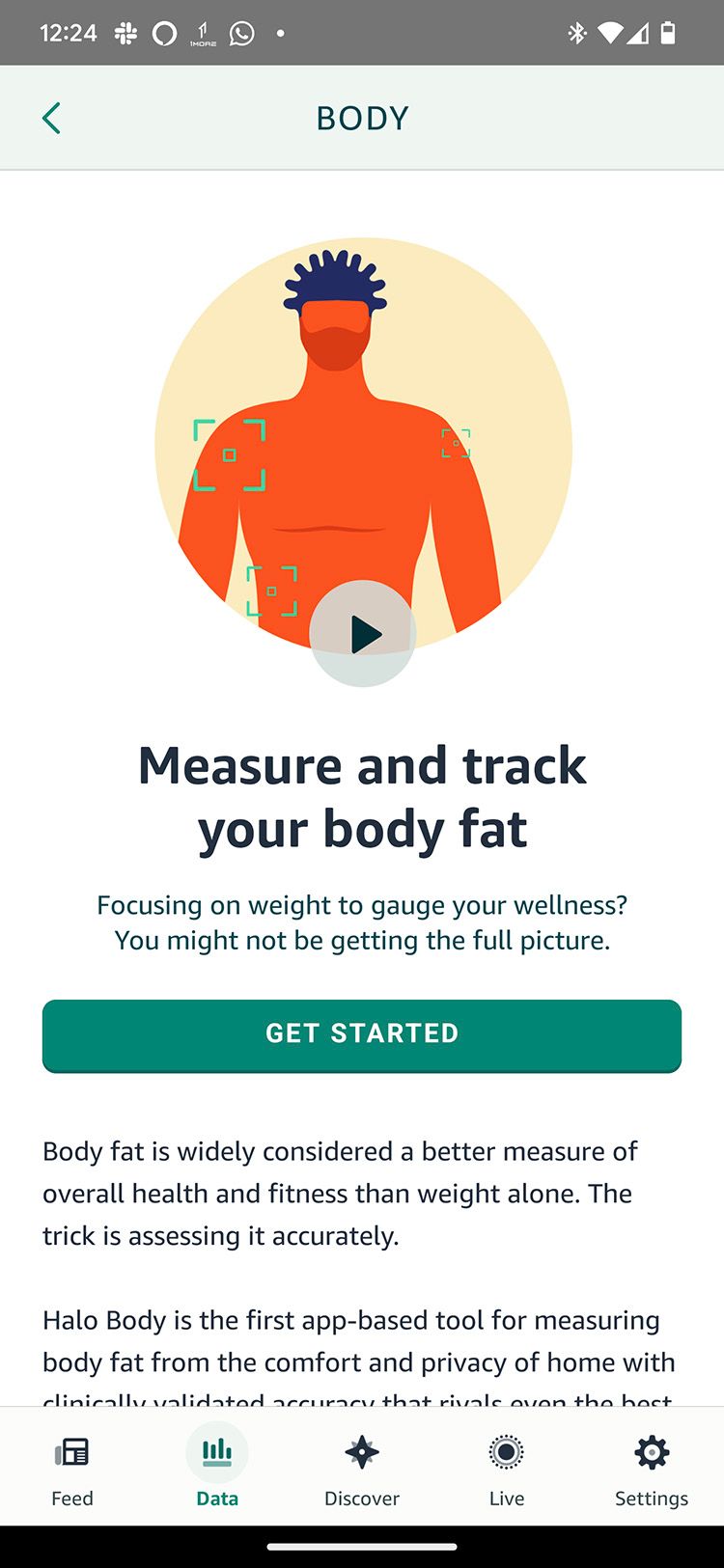
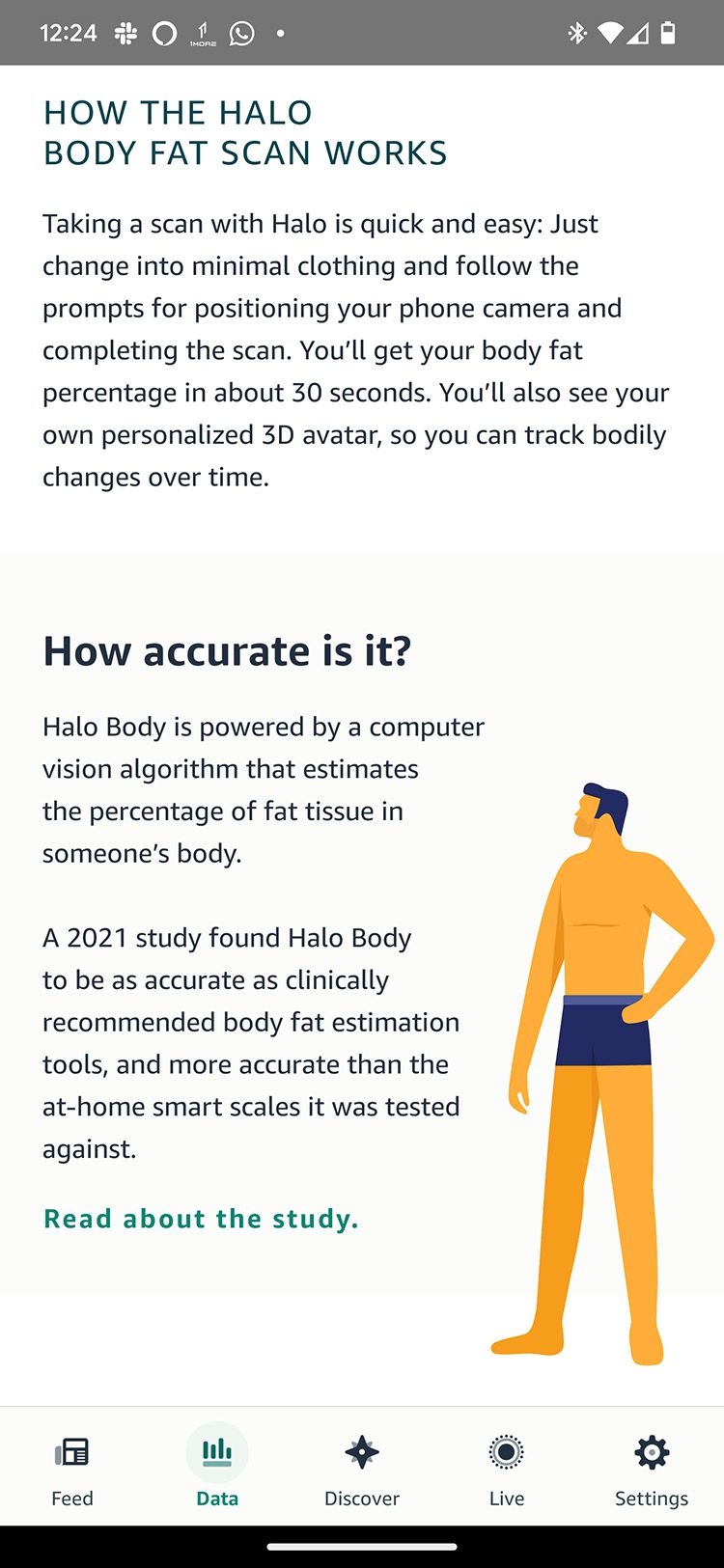
With all the premium tools at your disposal, the app offers a deeper dive into what the Halo View captures. It also presents content and tracking features that work more autonomously. A couple of examples stand out, both of which use the front camera on your phone to give you a score. The Movement feature measures posture, mobility, and stability by having you perform five quick exercises to give you a score. The app suggests doing it every few weeks to gauge improvement over time.
That also goes for Body, a section where you take multiple full-body photos — ideally with nothing but your underwear on — to measure body fat percentage. Amazon claims 97% accuracy and that using a camera phone is on par with a doctor's methods, based on a study with Pennington Biomedical Research Center and Massachusetts General Hospital. To ensure accuracy in the future, Amazon recommended that it's best to take the body scans in the same location every time. I was surprised at how easy the process was, with the Halo app using a big green checkmark to indicate when framing is right, and a proper photo's been taken.
If you’re wondering where those photos go, Amazon told me they process them in the cloud and automatically delete them, so no one sees them. It does the same for the short video clips you capture for Movement. This was how they addressed my questions about data privacy while using the Halo View and the app’s services:
We may collect information related to customer device usage in order to provide and improve the service, for example, charge frequency and time the display is active. We may also use engagement data to improve your experience or suggest things that may be of interest to you. However, we do not use your information for advertising, marketing, or product recommendations. Additionally, we do not share your Amazon Halo health data with third parties without your explicit consent. Please refer to the Amazon Halo Privacy Whitepaper to learn more.
Tone is another unique feature whose purpose is to "learn how you sound to people around you." Basically, it analyzes your voice as you talk to offer some kind of summary feedback on how you might be perceived. If this sounds weird or creepy, it's Amazon's attempt to tackle emotional and mental well-being; your phone's microphone records you talking to others to interpret that data.
You have to use your phone for this because the Halo View doesn't have a mic. Amazon and privacy don't always mix well, and this is one feature that’s sometimes hard to understand. Tone gives you an idea of where you stand by way of four categories that range between excited, appreciative, reserved, and irritated. The mode only works when you tell it to, so it has limited scope where you determine the start and stop points. I tried it but ultimately abandoned it because it wasn't doing anything for me.
Amazon Halo View: Tracking and performance
The Halo View puts less emphasis on daily tracking and more on weekly tracking. While you can always see your progress day-to-day, the Activity Points system takes your daily activity and gives you a score at the end of the week. Every 20 minutes of lighter activity earns you a single point. Moderate activity gets you one point for every minute, and intense activity gives you two points for every minute.
By default, the total you're aiming for is 150 points per week, which Amazon bases on recommendations by the American Heart Association for hitting levels that are considered "heart healthy." If you can hit 300 points, you're in the "very active" category. You can manually change the target number through the settings within the Halo app as a way to customize your goals.
The heart rate monitor plays the biggest role in determining what's light, moderate, or intense. That's not unusual, as other fitness trackers generally do it the same way, but the way I saw it, the point system is a lure to the content available in the app.
A variety of workouts and programs lie in wait — over 1,000 of them, in fact — all of which you can filter through to hone in on what you want to do, including the level you feel you're at. It helps to sift through the raft of content in there, though I found it took time to really settle on what I wanted to do, almost like endlessly scrolling on Netflix trying to decide what to watch.
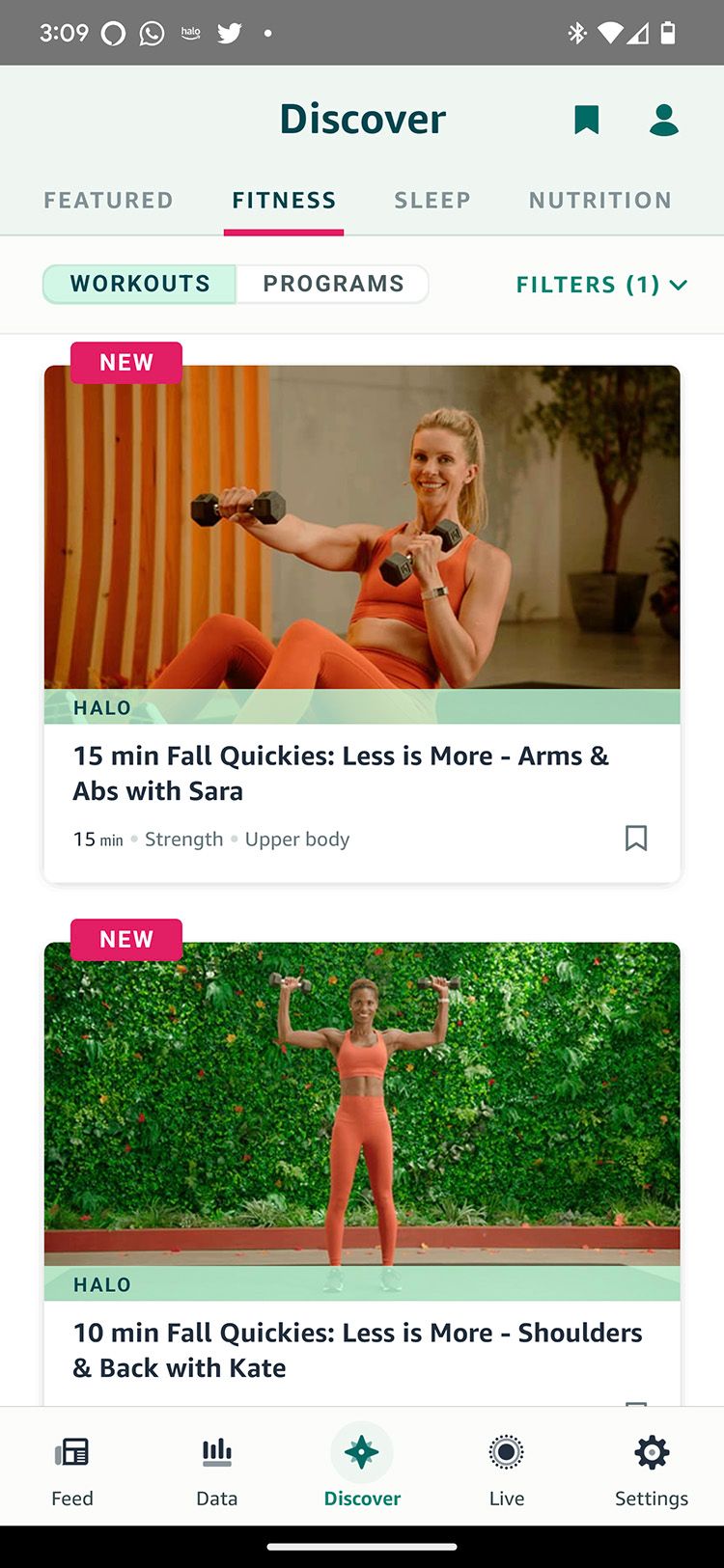
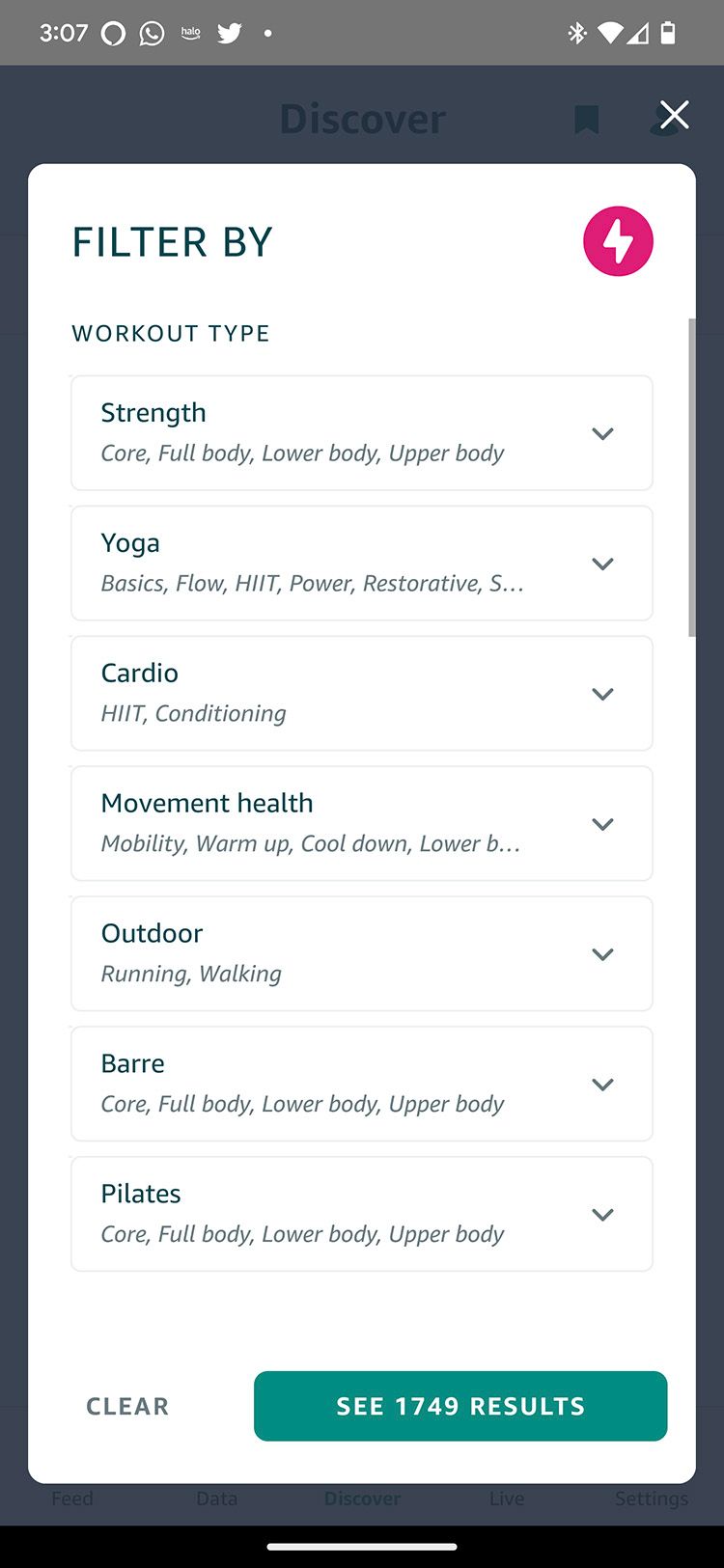
This library extends to things as varied as sleep, nutrition, mindfulness, and tone. You can look up recipes, try meditative practices to lull you to sleep or find a place of zen, and learn to speak or listen better with others. Some of it comes off a little ambitious, especially the Tone sessions, but the Halo View isn't lacking options. New workouts, programs, and sessions keep coming, and the good thing is that plenty of them are short, so it's possible to do several in a day. You can save any workout or session to add it to the Saved section within the app. I wasn't able to rearrange saved sessions the way I wanted, but at least they were easy to find once I put them in there.
I should mention that the filtering applies just as much to nutrition. You can choose meal type, course type, main ingredient, total cooking time, cuisine, and eating preference, like whether you want something keto, vegan, paleo, vegetarian, Mediterranean, Nordic, or anything else. If you have an allergy, you can input that data to wipe away any dishes that might be problematic. I didn't see anything resembling a detailed meal plan, but it's possible to bookmark the recipes you want and plan things out that way. Amazon previously said it would implement such a feature, but I never saw it during my testing.
As for equipment to work out, many exercises just require a mat, whereas others bring in dumbbells, resistance bands, blocks, and other elements to aid in the workout. You'll know what's required just by tapping on the workout in the app, though the preview thumbnail almost always gives you a visual clue. It's easy enough to push any of the content to your TV through a Chromecast, and also works via AirPlay and Amazon's Echo devices.
I preferred workouts with minimal equipment; I could focus more on technique and stretching, and found some of them very helpful. Your mileage and experience may vary considering how broad the focus could be here. However, even if you don’t want to undertake any of Amazon’s workouts, the Halo View still tracks steps, calories, and heart rate, awarding points and providing insights into heart rate activity while active.
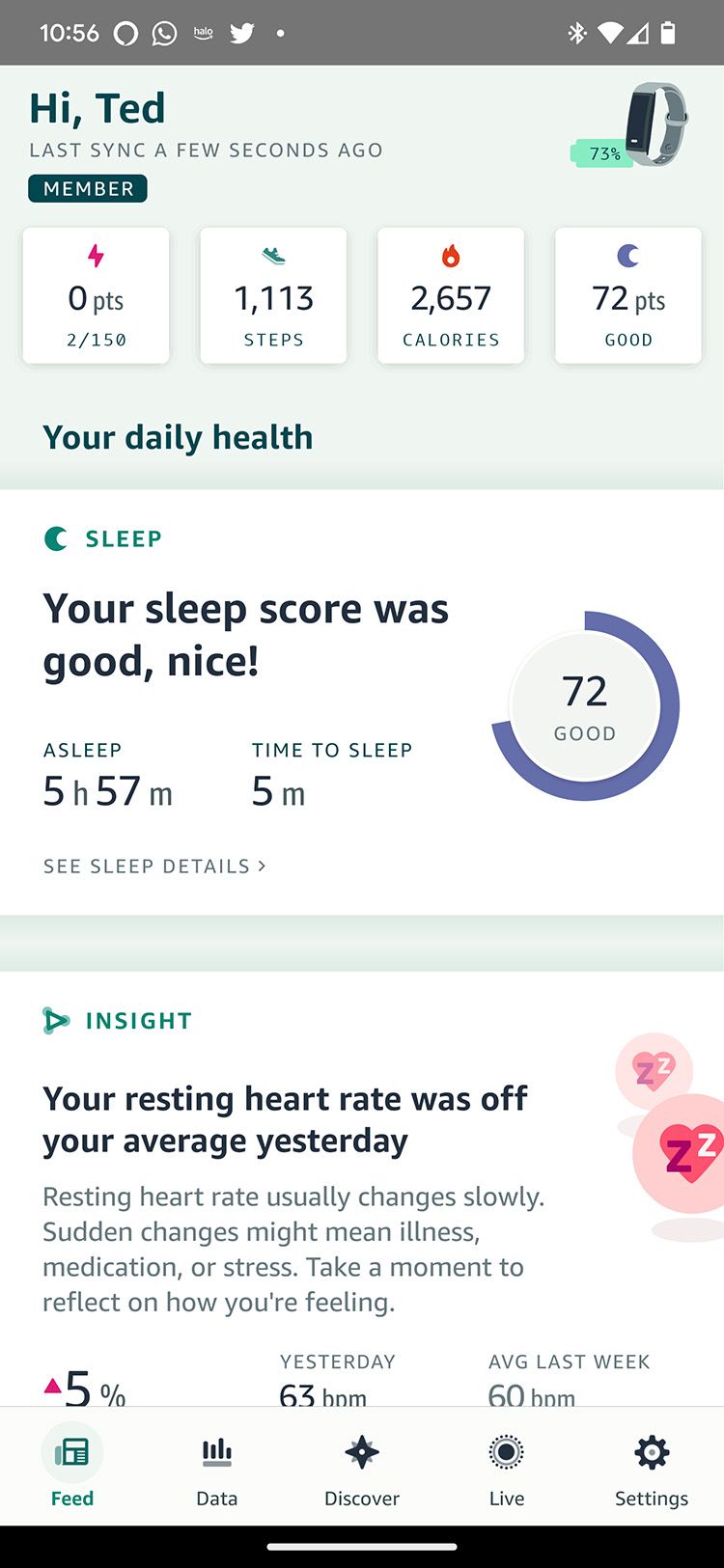
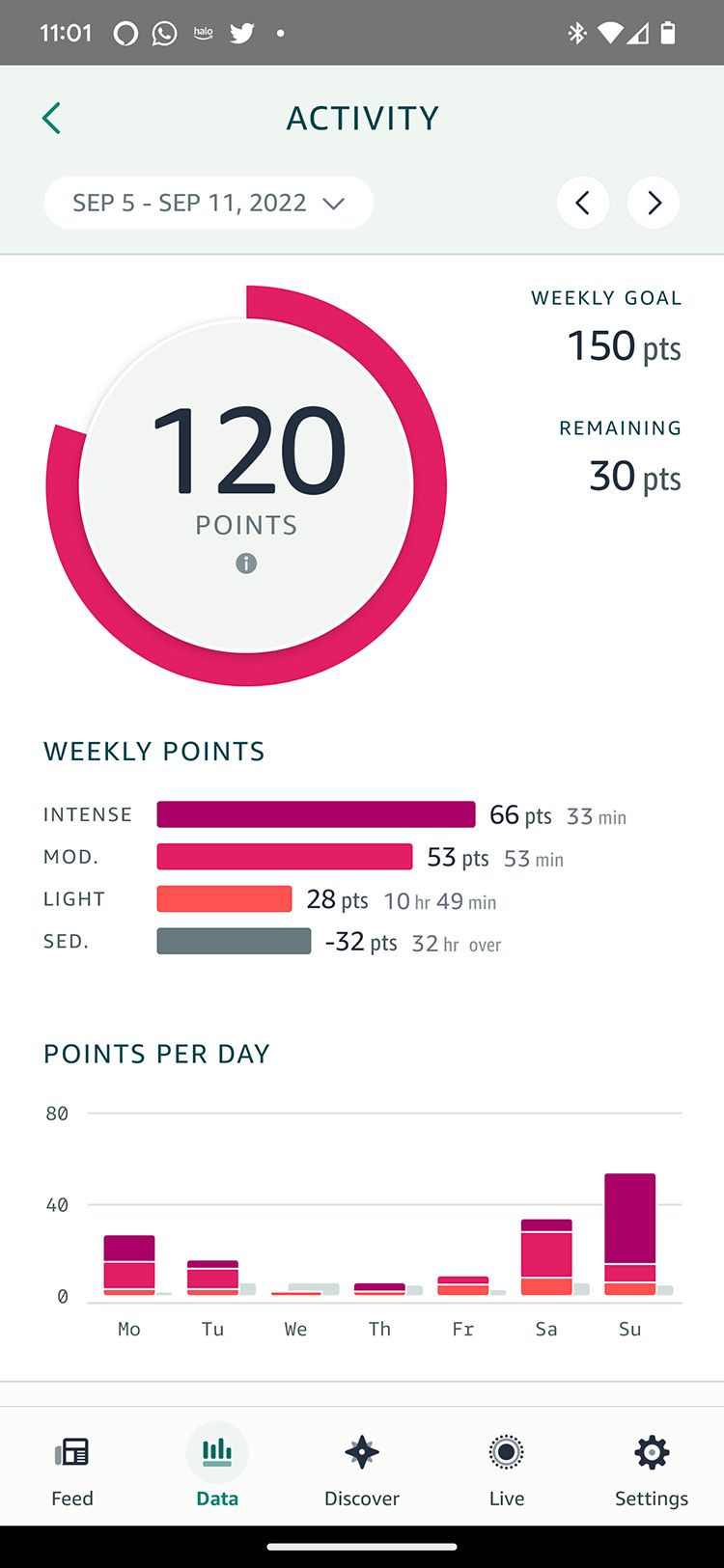
Over time, I got the impression the Halo View was more of an indoor tracker than an outdoor one. Mind you, it's very durable. I wore it to the beach and a pool in Aruba, and while riding in a UTV. I also had it on whenever I was cycling, never once finding anything to complain about. I just wish it had built-in GPS to keep tabs on distance, pace, routes, and more because that would've made it feel like the band was indispensable, no matter the conditions.
Even if you wanted to use the GPS connection from your phone, you're not going to see anything from that, either. This is a big miss for Amazon and one that makes it hard for anyone who takes their activity more seriously to consider the Halo View as a comprehensive tracker.
Amazon Halo View: Battery life
The lack of GPS hardware is a shame, too, because the battery life would probably hold up well enough. As is, you can stretch the Halo View out to about a full week. That's pretty good by all accounts, though you will get a longer span of up to 10 days with the Fitbit Inspire 3. These levels depend on what you're doing with the device, and with the extra sensors and connected GPS on the Inspire 3, it's possible battery levels might be closer between them.
I didn't find the Halo View especially lacking as to how long it stayed on, though I didn't leave the display on at all times, which would be a big drain. It doesn't take long to recharge; it can easily go from zero to 100 in just under two hours.
Amazon Halo View: Should you buy it?
The Halo View feels like a bargain from the outset because of its lower price and 12-month Halo membership, but it's best to look at the residual cost to get a better sense of the commitment involved. So much of what this tracker does sits behind that membership, meaning you have to pay $3.99/month to keep it going. Turn that down, and you get a very basic tracker that loses a lot of its integrative purpose.
I look at buying the Halo View and a Halo membership as a package deal. It's definitely a great tracker for the first 12 months and, assuming Amazon plans to replace the Halo View with a successor of some sort, the membership will apply to any new compatible device you get your hands on.
The challenge is fitness trackers are still a competitive space. Fitbit has the Inspire 3, plus the Charge 5 if you're willing to spend more, while Amazfit caters to the budget-conscious with the Band 5 and Band 7. All of them have features or integrations the Halo View doesn't, though you could argue the Halo membership offers benefits those other options don't.
The Halo app is as much of a sales pitch for this tracker as the device itself, if only because you get all that content for a year just by buying the device. You will have to weigh the extra cost over time to gauge whether it's the right fit for you, though. If you're serious about working out and want metrics to match, you might be better off going with something more robust.
Buy it if…
- You want a tracker that's easy to use
- You like the content in the Halo app
- You want something lightweight and rugged all at once
Don't buy it if…
- You want broader and more precise metrics
- You want connected GPS
- You're not keen on subscriptions

